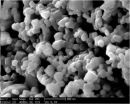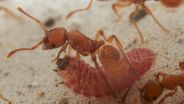(Press-News.org) DENVER (Oct. 29, 2014) – The severe flooding that devastated a wide swath of Colorado last year might have been less destructive if the bridges, roads and other infrastructure had been upgraded or modernized, according to a new study from the University of Colorado Denver.
"People need to understand the importance and seriousness of infrastructure," said Jimmy Kim, PhD, associate professor of structural engineering at the CU Denver College of Engineering and Applied Science and lead author the study. "There is an assumption that a bridge will stand forever and that's simply not true."
Kim along with co-authors Wesley Marshall, PhD, PE and Indrani Pal, PhD, both assistant professors of civil engineering at CU Denver, the leading public research college in Denver, examined the causes of the flooding and its impact on infrastructure.
The stage was set for the deluge when an unusual low pressure system generated a steady plume of monsoonal moisture flow from the Pacific Ocean toward Colorado's Front Range communities.
The rain began on Sept. 9, 2013 and didn't stop until the 16th. In just days, places like Boulder County received three-quarters of its yearly precipitation. Bridges collapsed, roads failed and homes were swept away.
According to the study, 120 bridges now need structural repair. Many were damaged by rushing water which washed out backfill soil and exposed bridge foundations.
Kim said new `scour control' methods, aimed at reducing these washouts, should be developed to help bridges withstand future flooding.
"You can do that by upgrading existing piers (columns) supporting the bridge or changing current design approaches" he said. "The Colorado Department of Transportation is currently working on improving scour design for bridge structures."
The researchers also suggested improving roads made of concrete or bituminous material like asphalt since they often disintegrate when flooded. Kim said fiber, nano-particles or polymeric admixtures could be added to these construction materials to increase tensile strength and flexibility while reducing cracking.
The study noted the successful use of geographic information systems (GIS) to help supply up-to-the-minute mapping and alerts about flood damage.
"The production of such data and maps extended well beyond the typical GIS community and included local news affiliates and even the City of Boulder itself," said study co-author Wesley Marshall.
For example, on September 27, 2013, Boulder launched a 'Community Flood Assessment' crowd-sourced map using the Crowdmap application. The city asked users to submit flood reports via the website or smartphone apps. They were also asked how deep the flooding was and if they lost power. Video and photos could be uploaded to locate the event on an interactive map.
"Such efforts were not only useful during the recovery efforts but will continue to be used toward helping increase the resiliency of Colorado during such events," Marshall said.
Overall, the researchers revealed a much wider problem.
From 1980 to 2007, about 90 percent of all global disasters were caused by flooding either by rain, tsunami, hurricane or some other natural event.
At the same time, the American Society of Civil Engineer's 2013 Report Card for America's Infrastructure gave the country a dismal D+. The group said $3.6 trillion was needed by 2020 to address the most serious problems.
In Colorado, the report card says, 70 percent of major roads are poor or mediocre and 566 bridges are structurally deficient.
"Reconstruction is very expensive and should be the last resort," Kim said. "But we can repair or strengthen existing systems less expensively. We are looking at a growing national problem, one that will only get worse if we ignore it."
INFORMATION:
The study was published last week in the Proceedings of the Institution of Civil Engineers. It is available upon request.
The University of Colorado Denver College of Engineering and Applied Science provides a diverse community with an accessible, quality education. The college offers innovative programs that are designed to meet real-world current and future industry needs while fostering an environment for creative problem solving. Undergraduate programs are accredited by the Engineering Accreditation Commission (EAC). Students and faculty build working relationships with area industries and organizations through hands-on research and learning experiences
CU Denver study says upgrading infrastructure could reduce flood damage
Outdated roads, bridges added to flood losses last year
2014-10-29
ELSE PRESS RELEASES FROM THIS DATE:
Blood test developed to diagnose early onset Alzheimer's disease
2014-10-29
The research team previously identified that changes in the brain occur two decades before patients show signs of dementia. These changes can be detected through expensive brain imaging procedures.
The new early detection blood-test could predict these changes and a person's risk of developing AD much earlier than is currently possible.
The blood test has the potential to improve prediction for AD to 91 per cent accuracy. However, this needs to be further tested in a larger population across three to five years, due to AD being a progressive disease.
In an initial ...
New solar power material converts 90 percent of captured light into heat
2014-10-29
A multidisciplinary engineering team at the University of California, San Diego developed a new nanoparticle-based material for concentrating solar power plants designed to absorb and convert to heat more than 90 percent of the sunlight it captures. The new material can also withstand temperatures greater than 700 degrees Celsius and survive many years outdoors in spite of exposure to air and humidity. Their work, funded by the U.S. Department of Energy's SunShot program, was published recently in two separate articles in the journal Nano Energy.
By contrast, current ...
Why some butterflies sound like ants
2014-10-29
Washington D.C, October 29, 2014 -- Ant nests can offer a lot to organisms other than just ants. They are well-protected, environmentally-stable and resource-rich spaces -- in many ways everything a tiny creature could ask for in a home. So long as you can live with an army of ants of course.
For the thousands of species of insects that squat inside ant nests, survival means finding ways to live with the ants -- by foiling the chemical cues ants use to distinguish friend from foe, for instance. Now a team of scientists from the University of Turin in Italy have been ...
New scientific review reveals emerging and established health benefits of whole grain oats
2014-10-29
CHICAGO, IL, OCTOBER, 29, 2014 – According to a new, wide-reaching collection of scientific reviews published in the October 2014 supplement issue of the British Journal of Nutrition, oats may play an important role in improving satiety, diet quality and digestive, cardiovascular and general metabolic health. In the supplement issue, entitled "Oats, More Than Just a Whole Grain," scientists from around the world explore the oat from agriculture and sustainability to nutrition policy and opportunity and new insights in nutritional science that go beyond cardiovascular ...
Black Republicans put most faith in US government
2014-10-29
Black Republicans trust the United States government more than other political groups, finds a new study from the University of British Columbia, ahead of the mid-term U.S. elections to be held on November 4.
Using election data from 1958 – 2012, the study measures the role race plays in determining levels of government trust for black and white Americans. While both groups show similar levels of political trust, when party lines are factored in, black Republicans are revealed to be the most faithful.
"Being both black and Republican is seen by some as going against ...
Women who took part in VOICE speak up about why they didn't use HIV prevention products
2014-10-29
CAPE TOWN, October 29, 2014 – Many of the women at first acted surprised. Some insisted the blood tests were wrong. But most conveyed to researchers why they had not used the study products assigned to them as participants in VOICE, a large HIV prevention trial that, as a likely consequence, did not find any of the three products that were tested to be effective.
The women were among 127 former VOICE participants who, as part of a behavioral sub-study called VOICE D, agreed to take part in in-depth interviews and/or focus group discussions after learning the results ...
Kidney cancer in Central Europe
2014-10-29
New research by the international Cancer Genomics of the Kidney consortium (CAGEKID) reveals an important connection between kidney cancer and exposure to aristolochic acid, an ingredient in some herbal remedies. The findings, published in Nature Communications, have important implications for public health.
Kidney cancer kills more than 140,000 people every year, and in Central Europe incidence rates have been increasing dramatically. CAGEKID, part of the International Cancer Genome Consortium (ICGC), has been studying the genetic causes of this disease in Europe. The ...
Study sheds light on genetic architecture of kidney cancer
2014-10-29
A new study on a large cohort of kidney cancer patients in Europe sheds light on the genetic architecture of the disease -- and reveals an apparent link between exposure to aristolochic acid and incidence of kidney cancer, particularly in Romania.
The research, by an international team led by scientists from the McGill University and Genome Quebec Innovation Centre in Montreal, underscores the importance of investigating possible sources of exposure to aristolochic acid. The compound, found in plants of the Aristolochia genus, also has been suspected of causing a kidney ...
ECG on the run: Continuous ECG surveillance of marathon athletes is feasible
2014-10-29
Sophia Antipolis, 20 October 2014. The condition of an athlete's heart has for the first time been accurately monitored throughout the duration of a marathon race. The real-time monitoring was achieved by continuous electrocardiogram (ECG) surveillance and data transfer over the public mobile phone network to a telemedicine centre along the marathon route. This new development in cardiac testing in endurance athletes, said investigators, "would allow instantaneous diagnosis of potentially fatal rhythm disorders".
Following trails in two marathon races, the investigators ...
Diets high in fruit, vegetables, whole grains and nuts among factors to lower first-time stroke risk
2014-10-29
Eating Mediterranean or DASH-style diets, regularly engaging in physical activity and keeping your blood pressure under control can lower your risk of a first-time stroke, according to updated AHA/ASA guideline published in the American Heart Association's journal Stroke.
"We have a huge opportunity to improve how we prevent new strokes, because risk factors that can be changed or controlled — especially high blood pressure — account for 90 percent of strokes," said James Meschia, M.D., lead author of the study and professor and chairman of neurology at the ...
LAST 30 PRESS RELEASES:
Scalable and healable gradient textiles for multi‑scenario radiative cooling via bicomponent blow spinning
Research shows informed traders never let a good climate crisis go to waste
Intelligent XGBoost framework enhances asphalt pavement skid resistance assessment
Dual-function biomaterials for postoperative osteosarcoma: Tumor suppression and bone regeneration
New framework reveals where transport emissions concentrate in Singapore
NTP-enhanced lattice oxygen activation in Ce-Co catalysts for low-temperature soot combustion
Synergistic interface engineering in Cu-Zn-Ce catalysts for efficient CO2 hydrogenation to methanol
COVID-19 leaves a lasting mark on the human brain
Scientists use ultrasound to soften and treat cancer tumors without damaging healthy tissue
Community swimming program for Black youth boosts skills, sense of belonging, study finds
Specific depressive symptoms in midlife linked to increased dementia risk
An ‘illuminating’ design sheds light on cholesterol
Who is more likely to get long COVID?
Study showcases resilience and rapid growth of “living rocks”
Naval Research Lab diver earns Office of Naval Research 2025 Sailor of the Year
New Mayo-led study establishes practical definition for rapidly progressive dementia
Fossil fuel industry’s “climate false solutions” reinforce its power and aggravate environmental injustice
Researchers reveal bias in a widely used measure of algorithm performance
Alcohol causes cancer. A study from IOCB Prague confirms damage to DNA and shows how cells defend against it
Hidden viruses in wastewater treatment may shape public health risks, study finds
Unlock the power of nature: how biomass can transform climate mitigation
Biochar reshapes hidden soil microbes that capture carbon dioxide in farmland
Reducing saturated fat intake shows mortality benefit, but only in high-risk individuals
Manta rays create mobile ecosystems, study finds
Study: Mixed results in using lipoic acid to treat progressive multiple sclerosis
Norbert Holtkamp appointed director of Fermi National Accelerator Laboratory
New agentic AI platform accelerates advanced optics design
Biologists discover neurons use physical signals — not electricity — to stabilize communication
Researchers discover that a hormone can access the brain by hitchhiking
University of Oklahoma researcher awarded funding to pursue AI-powered material design
[Press-News.org] CU Denver study says upgrading infrastructure could reduce flood damageOutdated roads, bridges added to flood losses last year


